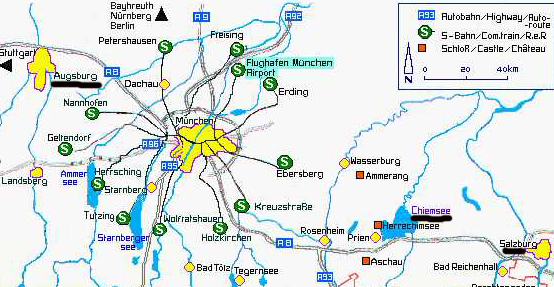
Rem(us) Family of Augsburg

Ever since Augsburg's founding by Caesar Augustus in 15 BC - after whom it was named, the town of Augsburg has stood at the intersection of some of the most important trade and travel routes on the Continent. For 400 years the city was the seat of a provincial government of the Roman Empire. Its ideal location made it a crossroad of all-important routes to the south. This was an advantage from which the powerful merchants and bankers likewise profited. They elevated Augsburg to rank among the world's most powerful cities. Kings and emperors were frequent guests here.
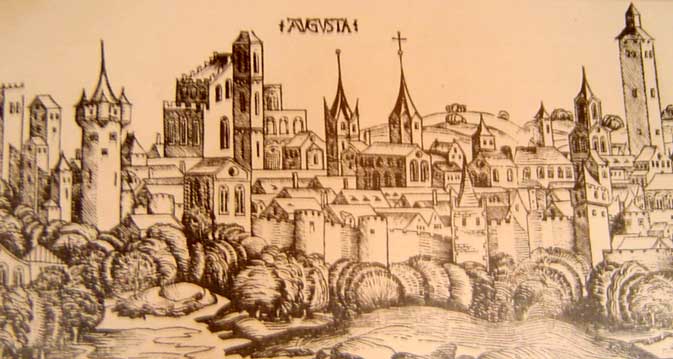
Augsburg in 1530
In the 13th century Augsburg became a Free Imperial City. It grew to be a creative center of famous painters, sculptors, and architects. Here the ancestors of the composer Mozart and the painter Holbein dwelt for centuries.
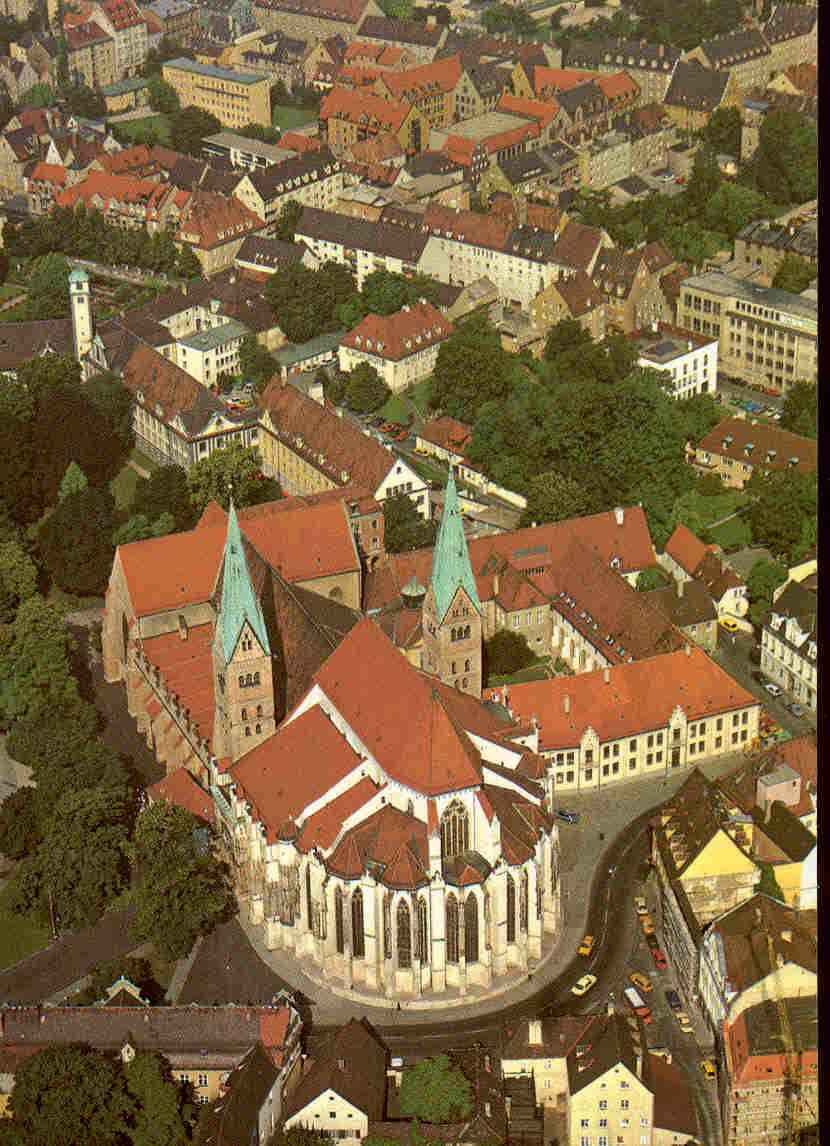
The Dom (Cathedral) above marks Augsburg as the seat of a bishopric. It was in Augsburg that, in 1518, Martin Luther and Cardinal Cajetan engaged in their famous debate. Cajetan was there for a meeting in the Dom and met informally with Luther and
Jacob Fugger's house in Augsburg.Click here for more on Luther in Augsburg.
Down through 20 centuries, there developed a cityscape shaped by all the great stylistic epochs. The Renaissance in particular flourished here - and Rococo became known as "the Augsburg style". (The text above is adapted from the city's website at
www.augsburg.de).Before moving on and finding out more about the Rem(us) family of Augsburg, you may want to take a more detailed look at Augsburg:
Click here for more on the churches in Augsburg.
Click here for other interesting aspects of Augsburg.
In this region, the economy had improved from the year 1000 to 1300; just after 1300 do we find our first documented Rem, Konrad Rem Von Gremheim who died in 1302. By 1300, the population had exceeded the land's capacity and famine was a regular event. By 1350, the Black Plague entered northern Europe and killed off about 60% of the population. Luckily, the Rem family survived through repeated Black Plague epidemics. About 1450, with the new lower level of population, all including the Rem family lived well in southern Germany. Click here for more on the Black Plague. And click here for the living conditions in 1500 where our Rem family story starts. Here next to St Ursula's Cloister Church was where the Bechtold Rem (born 1294 died 1370) house was located:
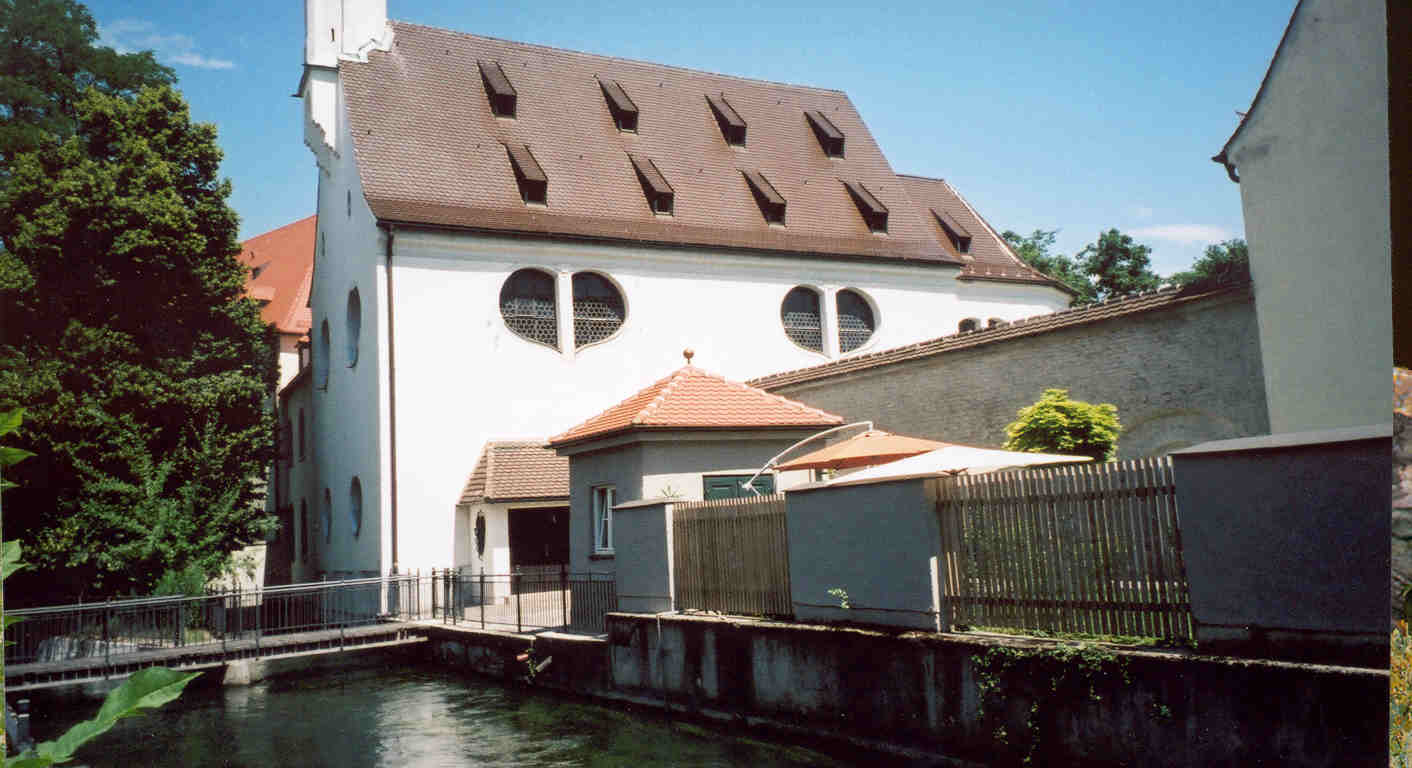
In the early 1500's the Rem family was one of the patrician families of Augsburg. This family is shown in the records of the time both by the original family name Rem (Rehm) and by the Latinized version Remus. The family name Rem was a name adopted by one of the German clans in the area and resulted in similar names like Reimer. Latinizing one's name if associated with the church or a university was commonly done in the Renaissance.
Click here for more on the Remus family name.The Rem(us) family thrived on the trade between Augsburg and Venice. This family had great visibility thought the work of Bishop Aegridus Rem who was born around 1485 (not 1500 as listed in some sources). Aegridus Remus like Martin Luther visited Rome in the early 1500's and like Luther was deeply effected by the sorry state of the Catholic Church. With Cardinal Lang of Salzburg, he attempted to internally reform Catholic Church in Bavaria. In part due to Lang and Rem(us), Bavaria stayed Catholic while most of Germany became Lutheran. He died in 1535. Find out why the people of Salzburg are called "Stierwascher" (steer washers) and what that had to do with Bishop Rem.
Click here for more on Bishop Rem.
The Rem(us) family married into other patrician families in Augsburg including the Fuggers and Welsers. For example, Aegridus discussed above was the son of the Augsburg Patrician Lucas Rem and Magdelena Welser. Their grandson was Ludwig Remus, 16th Lord Mayor of Augsburg.
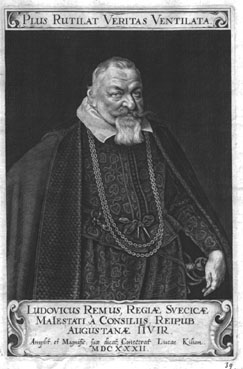
Georgius Rem(us) was the Vice-Chancellor of Altdorf University near Nuremberg. He was the great grandson of the noted
Augsburg Chronicler Wilhelm Rem and Walburga Fugger, Jakob Fugger's sister.Click here for more on the very interesting Altdorf University.
The family was badly split by the Protestant Reformation. Above you see the Catholic Bishop Rem and the Lutheran Georgius Remus and Wilhelm Rem. Also on the Catholic side were Wilhelm Rem's cousins Bernhard ("der Herren Fugger organist") and Barbara and Catherine Rem would were nuns.
Click here for more on Bernhard, Barbara, and Catherine (in German).The Rem(us) family was also in Memmingen, Passau, and Ulm.
Click here for a family tree for the Augsburg Rem Family.
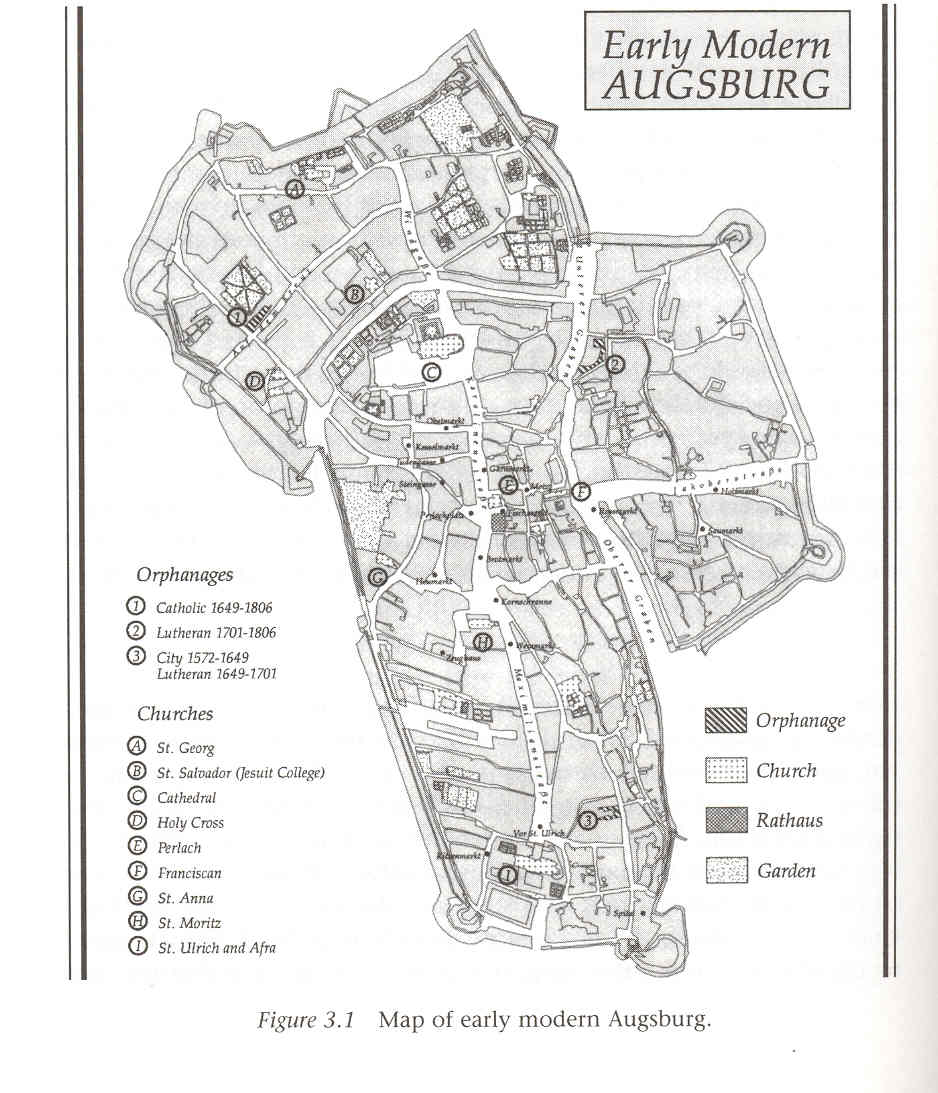
By 1550 much (but not all) of the reform-minded Rem(us) family of Augsburg had become Lutheran partisans. In 1555, a peace was made between the Catholics and Lutherans known as the Peace of Augsburg. The peace was not fully honored in Augsburg. As noted in the Cambridge Modern History Vol II (1904), "At Augsburg and Ulm the city franchises were violated, the democratic Councils purged of all refractory members, and their places supplied by rich Catholic merchants like the Fuggers and Welsers."
The city of Augsburg in that period (and the Rem family) owed its wealth to being at the center of the overland shipping network that transported goods from around the world from Venice to northern Europe; Lucas Rem for example worked in Venice, Lisbon, and Antwerp. This map shows the medial routes connecting Augsburg with Nuremberg, Leipzig and Saxony as well as the rest of the world:
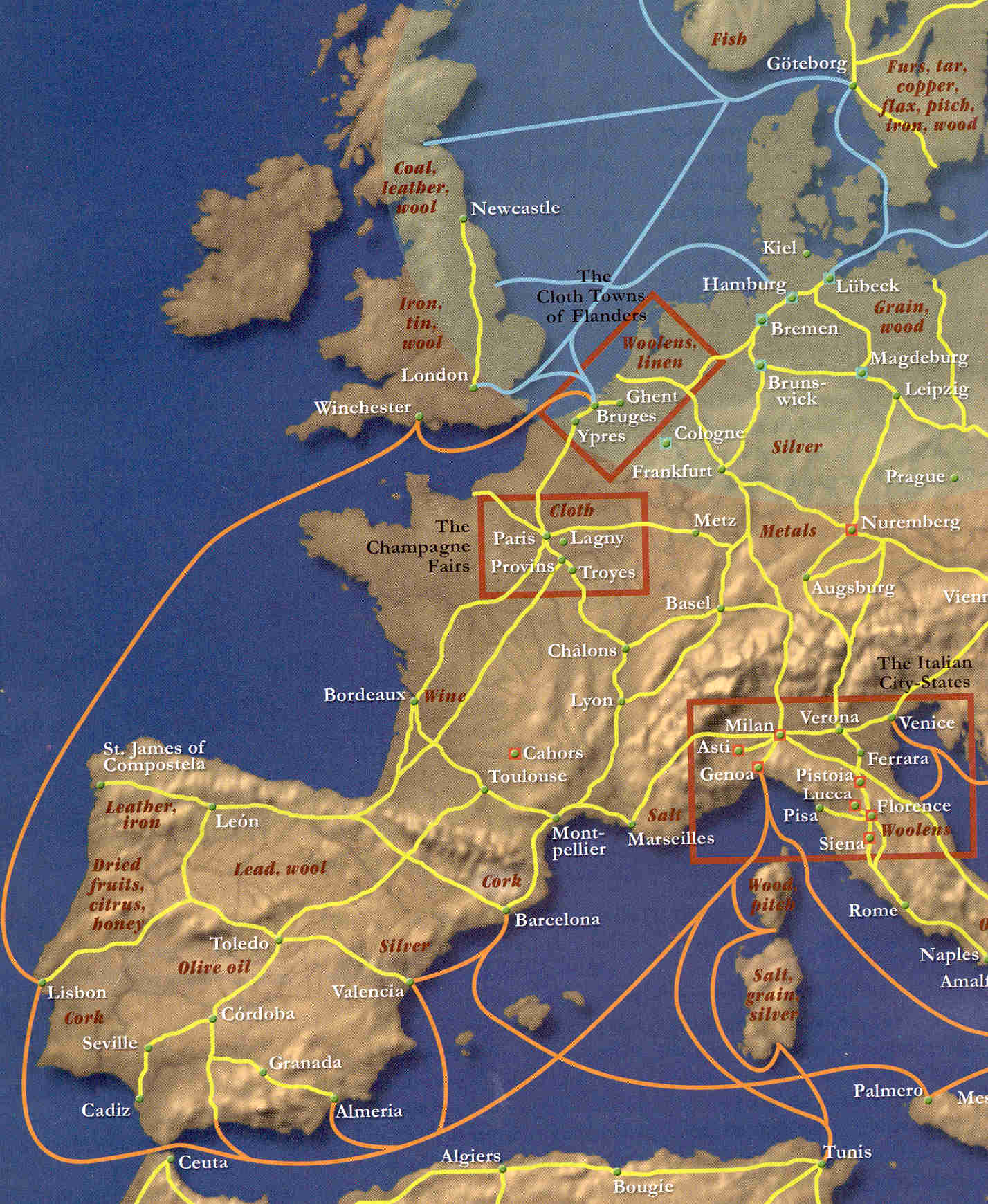
It the late 1500's sea routes became the main route for goods and Augsburg was bypassed. According to Thomas Safley (author of Matheus Miller's Memoir, St Martin's Press, NY 2000 and source of the map above) states that the inflation of 1622-23, epidemic of 1627-28, and siege of 1634-35 decimated the population, ruined the economy, and shook the society. By 1614 the Welsers were bankrupt and the Fuggers withdrew from affairs in Augsburg with debts of two million florins (a massive debt for the time).
It is unlikely that my genealogical line comes from the Rem(us) family of Augsburg. More likely my Remus family came from Burgers in
Kamenz, Saxony and the likely related Remus family of nearby Grossenhain, Saxony.Please send any queries to Bill Remus at
August 7, 2008